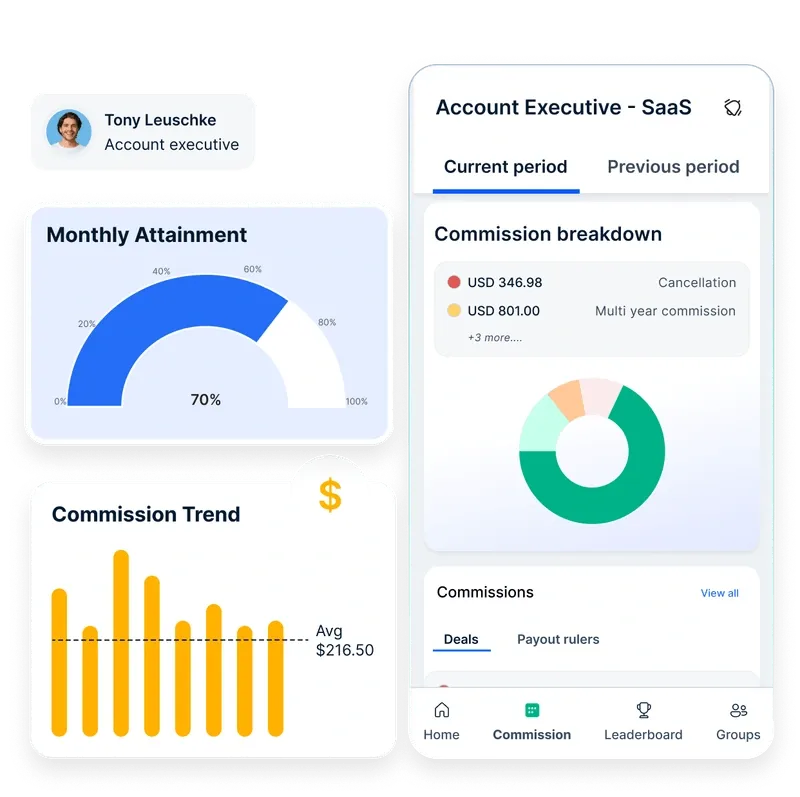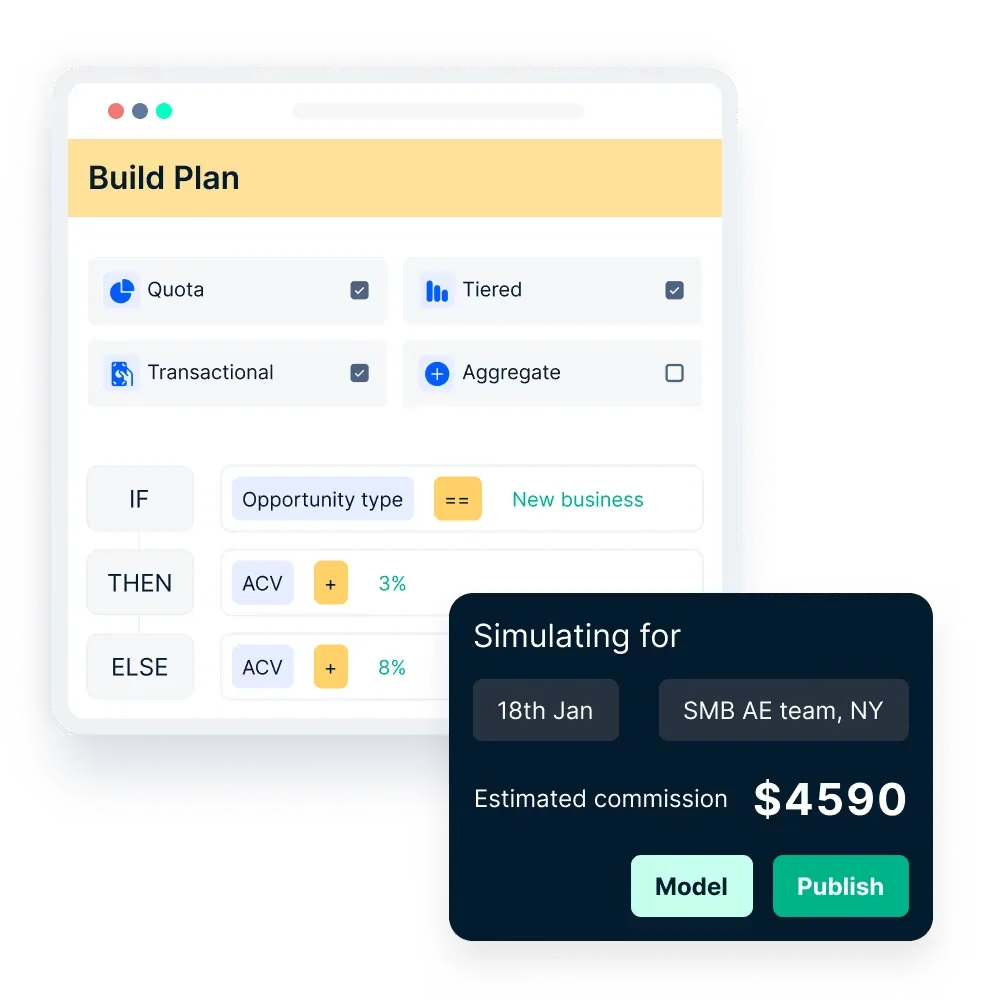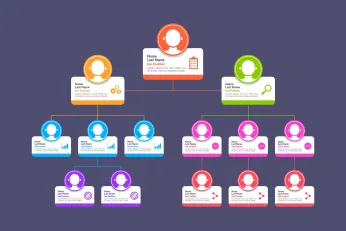تأهيل العملاء المحتملين باستخدام أطر عمل BANT في 6 خطوات مع أمثلة و20 سؤالاً
يساعد إطار عمل BANT في تأهيل العملاء المحتملين من خلال تقييم القدرة المالية والقدرة على اتخاذ القرار ومدى إلحاح الحاجة إلى الشراء والجدول الزمني للشراء. وعلى الرغم من فعاليته في تحقيق كفاءة المبيعات، إلا أنه يجب استخدامه بمرونة لتعزيز العلاقات وزيادة التحويلات.
في هذه الصفحة
For sales professionals and their organizations, time is a critical asset. Engaging with leads that do not align with your offerings means valuable time is lost on prospects who are more likely to convert. Many companies implement the BANT sales framework to enhance efficiency and focus on qualified leads.
BANT, which stands for Budget, Authority, Need, and Timing, serves as a structured approach for sales teams to assess the suitability of potential clients. By examining these four key criteria, salespeople can quickly determine whether a lead is worth pursuing.
In this article, we will delve into the BANT framework, exploring its benefits and challenges while providing practical guidance on how to integrate it into your sales process. This will empower you to maximize your time spent on qualified leads and ultimately close more deals.
ما هو BANT؟
عندما يكون هناك العديد من العملاء المحتملين المتاحين، يحتاج مندوبو المبيعات إلى استراتيجية لتحديد العملاء المحتملين المؤهلين كعملاء محتملين. والجدول الزمني لاحتياجات هيئة الميزانية (BANT) هو الإطار الذي يساعد مندوبي المبيعات في هذه المهمة.
Developed way back in the 1950s by IBM, this strategy helped improve the sales process. The framework streamlines the lead qualification process and thus saves a lot of time that could be used in nourishing the qualified leads. This BANT sales methodology helps sales professionals evaluate high-quality leads effectively in the following way:
- Budget: Assess if the prospect's budget aligns with your product or service.
- Authority: Identify the decision maker or economic buyer responsible for purchasing decisions.
- Need: Understand the prospect's pain points to determine if your solution is worth pursuing.
- Timeline: Establish the prospect's timeline for making a purchase, which can help manage longer sales cycles.
Using the BANT sales qualification framework allows sales teams to qualify leads efficiently, ensuring they focus on relevant leads that align with their goals. By practicing active listening and identifying stakeholders, sales reps can navigate the decision-making process effectively, leading to more deals and positive implications for both sales and marketing teams.
Benefits of BANT framework for sales
Using the BANT framework for lead qualification offers several advantages for sales teams:
- Improved lead qualification: BANT helps identify high-quality leads with a strong potential to convert.
- Increased sales efficiency: By focusing on qualified prospects, sales reps can reduce wasted effort and close deals faster.
- Better decision-making: The BANT criteria allow for informed choices about which leads to pursue, considering their budget, authority, need, and timeline.
- Strategic conversations: Salespeople can engage prospects in meaningful discussions about their pain points and decision-making processes. This approach helps tailor pitches effectively.
- Enhanced sales pipeline management: By qualifying leads early, teams can streamline their sales process and focus on opportunities worth pursuing.
Using the BANT framework enables sales teams to work smarter, manage relationships better, and ultimately improve their sales cycles. Let’s cover the significant stats that proves its importance.
-> A HubSpot Report found that organizations that use BANT saw a 30% increase in lead conversion rates.
-> A Gartner Digital Markets survey found that over 52% of salespeople still find BANT reliable.
-> The same study revealed that 41% value its flexibility, and 36% say it helps them plan a timeline for the sales process.
The statistics underscores the significance of BANT methodology. However, there are some challenges and limitations that needs to be minded.
Challenges and limitations of BANT
While the BANT framework is popular for many sales teams, it has some limitations:
- Transaction-focused: BANT emphasizes budget and timeline, which can cause sales reps to overlook the prospect's deeper needs and pain points. This may lead to generic pitches that fail to connect.
- Discourages relationship building: Treating BANT as a strict checklist can hinder rapport with prospects. Salespeople should aim for genuine interactions rather than following a rigid script.
- Recognized needs only: BANT focuses on problems that prospects already know about. This approach may miss opportunities to educate them on underlying issues they haven't identified yet.
- Not ideal for complex sales cycles: BANT often centers on a single decision-maker and straightforward timelines. This simplicity can be inadequate for lengthy B2B sales processes that involve multiple stakeholders and variable timelines.
Using the BANT sales process effectively requires balancing structure with a personal touch. This is why you need to know how to use the BANT structure.
How to use the BANT sales framework for lead qualification?
Using the BANT sales framework can significantly enhance your lead qualification process. Here’s how to effectively apply it.
1. Understand the prospect's budget
First, look beyond just the dollar amount when assessing a prospect's budget. In today's market, pricing models can vary widely, especially with options like subscription services. Instead of viewing the budget as a fixed number, encourage prospects to consider their expected ROI.
If your solution aligns with their financial goals, focus on the potential outcomes rather than just upfront costs. This approach can help you qualify leads more effectively.
2. Identify stakeholders in the decision-making process
Every B2B sale typically involves multiple stakeholders. Knowing who is involved in the purchasing decision is crucial. Understand each person's role, decision-making authority, and priorities. If your main contact lacks the power to finalize the deal, ask for introductions to others who can influence the final purchase decision. This ensures you’re engaging with the right people throughout the sales cycle.
3. Determine the importance of the problem
Next, assess how critical the prospect's pain points are. Ask questions to gauge their motivation to solve these issues. Understanding whether they prioritize your solution over other initiatives will help you navigate their decision-making process and avoid wasted effort later on.
4. Prepare a timeline for the sales process
Find out how quickly your prospect needs to make a decision. Knowing if there are lengthy approval processes or if they are ready to move quickly can help you manage your sales pipeline effectively.
5. Stay informed through multiple channels
Keep track of your prospects by following them on social media and attending relevant events. This ongoing engagement allows you to identify new needs and additional stakeholders, enhancing your ability to qualify prospects.
6. Use digital tools to track your progress
Finally, leverage digital tools to manage relationships and track your sales process. These tools help you stay organized as you implement the BANT framework and ensure you don’t lose sight of any prospects in your pipeline.
By following these steps, you can streamline your lead qualification process and improve your chances of closing deals successfully.
Compass offers robust tools to enhance your tracking capabilities. With comprehensive reports, you can identify ROI on your Incentive Compensation Management (ICM) initiatives, including quota attainment, territory reports, and plan effectiveness.
The mobile app allows sales reps to monitor their progress in real-time, while providing a dedicated view for managers, directors, VPs of Sales, and RevOps teams to oversee performance effortlessly.

Additionally, the finance team can leverage custom reports to analyze the revenue impact of commissions, facilitating informed decisions for future budget allocations. By integrating these features, Compass ensures that your sales process remains transparent and efficient, empowering your team to achieve their goals.
20 burning BANT questions to ask while qualifying leads
Asking the right questions ensures you focus on leads with the highest conversion potential. Here are 20 essential BANT questions to help you qualify leads efficiently and drive better sales outcomes.
Budget questions to ask
- Current spending: "What do you currently spend to address this issue?" This question helps establish a baseline for the prospect's budget.
- Cost of inaction: "How much is this problem costing you per [week, quarter, year]?" This highlights the financial impact of not solving the issue.
- Potential gains: "What could your team gain by making this investment?" Framing it this way can shift the focus from loss prevention to growth potential.
- Stakeholder identification: "Which team’s budget would this tool fall under?" This helps identify other stakeholders involved in the decision-making process.
- In-house solutions: "What would it cost to build this system internally?" This uncovers whether they are considering external solutions or can manage it in-house.
- Long-term costs: "What happens if you don’t fix this issue in five years?" This emphasizes the urgency of making a purchase.
- Price considerations: "How much will price influence your decision?" Understanding this helps frame your product's value against its cost.
- Budget range: "Have you set a budget range for this purchase?" This reveals how much research the prospect has done.
- Expected ROI: "What ROI are you hoping to achieve?" This aligns your product with their goals.
- Business impact: "What would be the impact on your business if this issue remains unresolved for two years?" This question uncovers deeper insights into their pain points.
Authority and decision-making
- User involvement: "Who will be using the product?" This identifies potential decision-makers and stakeholders.
- Past purchases: "How did your last purchasing decision go?" Learning from previous experiences can guide your approach.
- Decision-making process: "Can you explain how decisions like these are typically made in your organization?" This helps understand their internal hierarchy and processes.
- Involvement of others: "Will anyone else be part of this decision?" Encouraging early involvement of stakeholders can streamline discussions.
Identifying needs and urgency
- Problem recognition: "When did you first notice this problem?" Understanding the timeline helps assess urgency.
- Motivation for change: "What prompted you to seek a solution now?" This reveals their immediate pain points and needs.
- Prioritization: "What are your top priorities right now?" Knowing their priorities helps align your solution with their goals.
- Success definition: "What does success look like for you if you solve this challenge?" This gives insight into their expectations and constraints.
- Upcoming deadlines: "Are there any upcoming events that require a solution soon?" Identifying deadlines can create urgency in the buying process.
- Short-term objectives: "What milestones are you targeting soon?" This encourages prospects to share actionable timelines, aiding both parties in planning effectively.
By using the BANT framework, sales teams can qualify leads more effectively and manage relationships with prospects better, ensuring a smoother sales process and reducing wasted effort along the way. Streamline your sales process with Compass!

Compass helps streamline the sales process by allowing organizations to design transparent quotas based on forecasting that align with revenue goals. It enables teams to edit assigned quotas during the plan period to match updated business strategies and allocate targets through both top-down and bottom-up approaches. This flexibility increases attainment and helps deliver on revenue goals effectively. Schedule a call now!
استنتاج
The BANT framework remains a powerful tool for sales qualification, helping teams identify prospects with real potential. By assessing budget, authority, need, and timeline, sales reps can navigate decision-making authority and manage relationships effectively.
While BANT has limitations, adapting it with a personalized approach ensures better sales pipeline management. To make this process even more efficient, Compass provides robust tools to track sales performance, adjust quotas, and drive revenue goals.
With real-time insights and customizable reports, sales leaders can optimize their strategy and maximize their expected ROI. Schedule a call now!
الأسئلة الشائعة
1. What is a BANT in sales?
BANT stands for Budget, Authority, Need, and Timeline. It’s a sales qualification framework that helps sales reps identify high-quality leads. By using BANT, they can determine if a prospect is worth pursuing. Each element focuses on critical aspects of the sales process.
2. Is BANT still relevant?
Absolutely! BANT remains highly relevant in today’s sales landscape. It provides a straightforward way to qualify prospects. As sales cycles become more complex, having a clear framework helps salespeople manage relationships effectively. It ensures they focus on prospects who are likely to make a purchase.
3. What is the BANT scoring system?
The BANT scoring system evaluates prospects based on four criteria:
- Budget - Does the prospect have the necessary budget?
- Authority - Is the prospect the decision maker?
- Need - What are the pain points that your product or service addresses?
- Timeline - When does the prospect plan to make a purchasing decision?
Sales reps score each criterion to prioritize leads in their sales pipeline.
4. What part of the sales cycle is BANT?
BANT is typically used in the early stages of the sales cycle. It helps in lead generation and qualifying prospects before moving them further along in the decision process. By identifying pain points and understanding the prospect's timeline, sales reps can tailor their approach for better engagement.
5. What is BANT theory?
BANT theory revolves around understanding key factors that influence a purchasing decision. It emphasizes that successful selling requires more than just presenting a product or service. Sales reps must identify prospects who meet all four criteria of BANT to avoid negative consequences later in the sales process. By applying this theory, they can focus on leads that are considered viable, thus increasing their chances of success.














